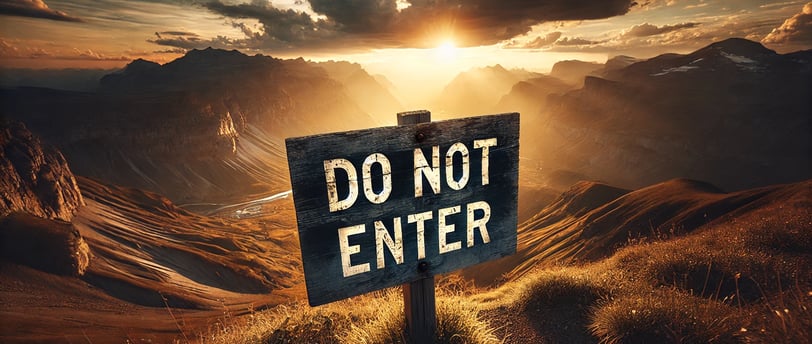Uncharted Wonders: Four Places You’re Not Allowed to Visit
Uncharted Wonders: Four Places You’re Not Allowed to Visit. n a hyper-connected world where we often assume everything is within reach, these four sites remind us that not all places are meant for human footprints.
SCIENCE
Camapa Editorial
1/11/20253 min read


Introduction
In an age where social media and global tourism have made the farthest corners of the world appear just a click away, it’s easy to believe there is no spot on Earth left unexplored. Yet, there are still locations so protected or perilous that setting foot in them is strictly prohibited. Whether for legal, safety, or scientific reasons (or a combination of all three), these forbidden destinations remain under lock and key. Here are four fascinating examples—scattered across the Arctic, South America, Europe, and Australia—where human access is all but impossible.
1. Svalbard Global Seed Vault (Norway)
Location: Spitsbergen Island, near the North Pole
Hidden deep within a remote Arctic mountain lies the world’s most secure vault—not for diamonds or gold, but for seeds. Officially known as the Svalbard Global Seed Vault, this facility holds over 900,000 seed samples from across the globe, serving as a backup in case a global catastrophe ever destroys the crops essential for human survival.
Security and Structure:
Buried more than 100 meters inside the mountain, the vault is protected by layers of rock and advanced security systems. It is designed to keep seeds viable for thousands of years.Climate Concerns:
Recent temperature rises in the Arctic have caused alarm among scientists. In 2016, warmer conditions led to melted permafrost water seeping into the entry tunnel. Despite extensive climate-control measures, such events highlight the delicate balance between nature’s shifts and humanity’s efforts to preserve its food sources.
2. Snake Island (Ilha da Queimada Grande, Brazil)
Location: Approximately 35 kilometers off the coast of São Paulo
If venomous snakes terrify you, you’ll want to steer clear of Ilha da Queimada Grande. This remote Brazilian island is infamous for having one of the highest concentrations of venomous snakes on the planet—up to five snakes per square meter.
Danger Level:
Home to the jararaca-ilhoa, a highly venomous pit viper, the island is virtually off-limits to everyone except specially authorized researchers. The Brazilian government enforces a strict no-entry policy, requiring any scientist who visits to bring a medical professional along and follow rigid safety protocols.Why So Many Snakes?
The abundance of snakes can be attributed to an absence of natural predators and a plentiful food supply (primarily birds). This isolated ecosystem allowed the snakes to thrive and evolve in almost total seclusion.
3. Lascaux Cave (France)
Location: Montignac, in southwestern France
One of the most culturally significant sites on Earth lies in the Lascaux Cave, home to some of the best-preserved examples of prehistoric art. Discovered accidentally in 1940 by four teenagers searching for a lost dog, the cave became an instant archaeological treasure trove.
Ancient Masterpieces:
Dating back about 17,000 years, its 600 paintings and 1,000 engravings feature animals like horses, bisons, mammoths, and even a rare human figure. One of the most famous sections is “The Hall of the Bulls,” showcasing large, vividly rendered bovines.Restricted Access:
Public visits were initially allowed after its discovery, but by the 1960s, mold and other deterioration—caused by the influx of tourists—began damaging the artwork. As a result, Lascaux was closed to preserve these invaluable prehistoric paintings. Today, only a replica site and museum offer a glimpse into its wonders.
4. Uluru (Ayers Rock, Australia)
Location: Uluru-Kata Tjuta National Park, Northern Territory
Rising dramatically from the Australian desert, Uluru—also known as Ayers Rock—is one of the largest monoliths in the world. For decades, it was a popular tourist destination, and adventurous visitors could climb to its summit. However, this changed when the local Anangu people successfully campaigned to ban climbing.
Sacred Significance:
The Anangu consider Uluru a sacred site, central to their belief systems. They view it as evidence of celestial beings who brought life to Earth, making the rock a profound part of their spiritual heritage.Current Restrictions:
Since October 2019, climbing Uluru has been illegal in deference to Anangu traditions. While travelers can still admire the monolith from designated viewing areas, physically stepping on Uluru itself is now forbidden.
Conclusion
In a hyper-connected world where we often assume everything is within reach, these four sites remind us that not all places are meant for human footprints. Whether preserving humanity’s future, protecting delicate ecosystems, safeguarding ancient art, or respecting sacred beliefs, the restrictions on these destinations underscore the importance of preserving the invaluable treasures our planet holds—sometimes by keeping them off-limits.
Camapa Editorial
camapaeditorial@gmail.com
© 2024. All rights reserved.
Our mission at Camapa Editorial is to explore, analyze, and present insights within these fields in a way that both educates and inspires further inquiry. Whether delving into groundbreaking scientific discoveries, examining the intricacies of athletic performance and emerging sports, or exploring the multifaceted world of entertainment, Camapa Editorial aims to be a trusted guide in your journey of learning and exploration.
